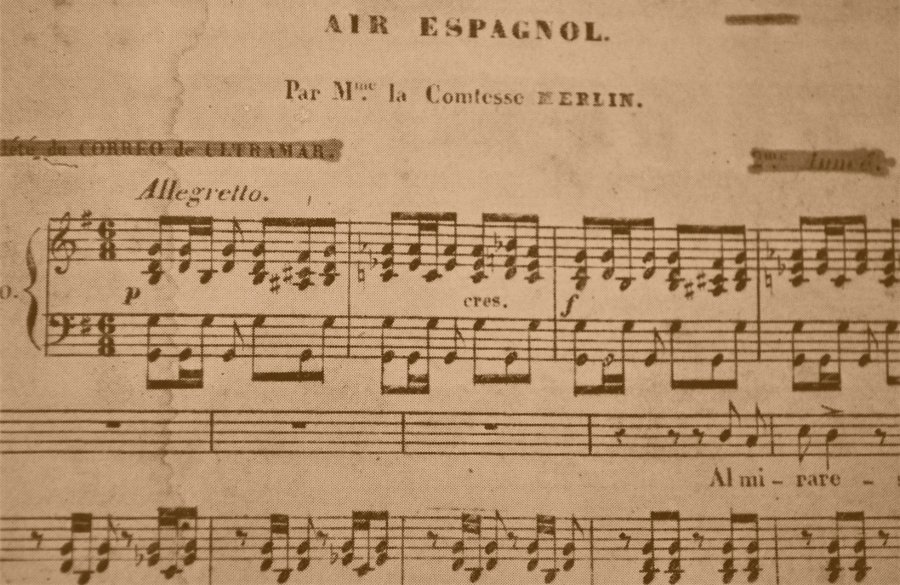
Mercedes and her sister Pepita loved to dance, sing and play Spanish dances and songs. They learned the traditional music, including the popular fandangos, seguidillas and boleros. The sisters happily played piano, flashed their castanets and dressed up as typical majas to do their dances. Mercedes never lost her love for these Spanish airs, and in Paris she often performed them for her good friends. One memorable night, her host the Marquis de Custine brought out a pair of castanets and lured Mercedes into improvising these familiar songs with Chopin at the keyboard. Soon she was singing and dancing around the room.
This playlist includes pieces that Mercedes may have actually heard or very similar ones. There are other connections too. Boccherini composed his famous Fandango (from the Guitar Quintet No. 4 in D major {G. 448}) as well as his Musica Notturna delle Strade di Madrid (Quintet in C major Op. 30 No. 6 {G.324}) under the patronage of the Infante Don Luis Antonio, brother of Carlos IV. The Infante and his court resided for many years in his palace of Boadilla del Monte near Madrid – the same palace which would pass to his daughter, the wife of Godoy, the royal favorite and Joaquín de Santa Cruz’s supporter. Under the French occupation, General Merlin purchased the confiscated estate – most likely planning it to be his grand residence. Things didn’t quite work out (small matter of the Peninsular War) and Mercedes recalled in her memoirs that she only visited the property once due to the near-constant guerrilla fighting around Madrid. It was during one relative lull in hostilities that she convinced her husband to arrange a country picnic with friends, although this particular picnic required a heavily armed escort of Royal Guards.
In homage to the nineteenth-century diva, María Malibran, the mezzo-soprano Cecilia Bartoli sings the aria, Yo que Soy Contrabandista composed by the singer’s father, Manuel García. Mercedes would definitely have recognized the piece as it was extremely popular in her day. Furthermore, Manuel Garcia was her vocal coach in Paris and she knew la Malibran as a young girl – Mercedes eventually wrote the first biography of the singer after María’s untimely death.
The playlist begins with a seventeenth-century seguidilla from the New World (De Tu Vista Celosa) – perhaps heard by Mercedes’ earliest Cuban-born ancestors. It ends with a composition by the virtuoso Spanish violinist, Pablo Sarasate. He was born the year of Mercedes’ celebrated Havana journey and arrived at the Conservatoire de Paris the year of her death. He clearly evoked traditional Spanish songs for his Airs Espagnols (Op. 18). Mercedes composed her own Airs Espangols – a lively song reminiscent of those she loved as a teenager. Look for a video of it being performed – soon to come! Until then, enjoy Sarasate’s beautiful piece, arranged for violin and orchestra.
Simplemente, un bello trabajo; felicidades, Alina
Gracias! Pronto tendremos más playlists con música cubana (contemporánea y de la época colonial), de ópera y clásica.